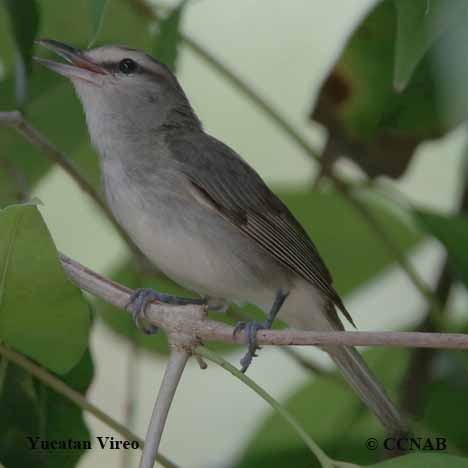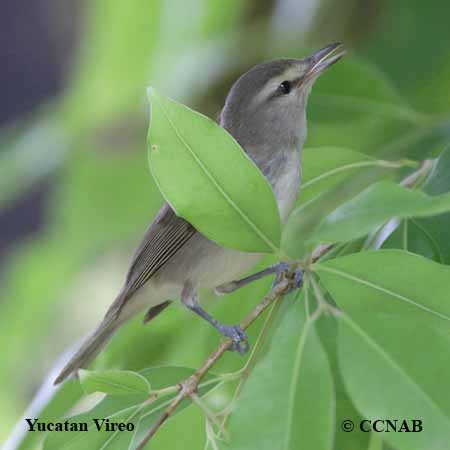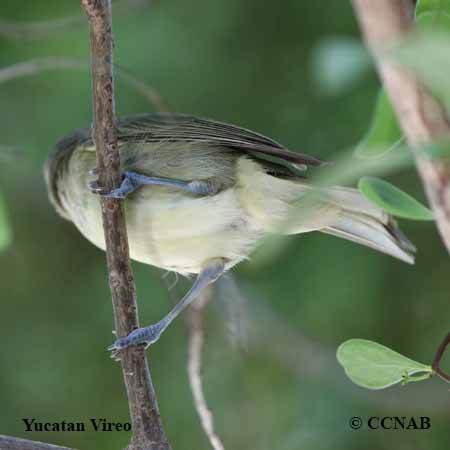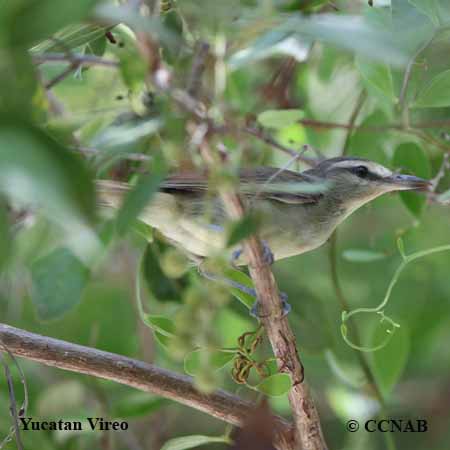North American Bird Search Box
This search box can be used to find bird species using bird's english, french or latin name, or to identify bird by its 4 letter Alpha Code
Field Guide for all the Birds of North America
Yucatan Vireo
4 Letter (english names) Alpha Code: YUVI (5)
Viréo du Yucatan
Vireo magister
Information, images and range maps on over 1,000 birds of North America, including sub-species, vagrants, introduced birds and possibilities
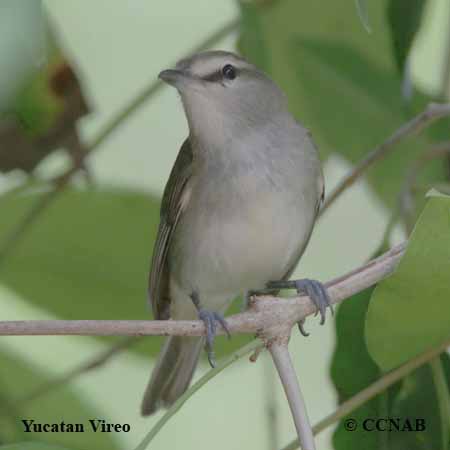
Species: The Yucatan Vireo (Vireo magister) is a tropical vireo seen in southern extremes of Mexico, Central America and on some Caribbean islands. It is similar in size to the Red-eyed Vireo and prefers living close to coastlines and is common in Belize and a few islands in the Caribbean Sea. It was recorded seen once in Texas and was accepted as a vagrant
Distinctions: The male and female are very similar looking in appearance. It has a large bill with a visible hook at the end of the upper bill, same identifying features seen in other vireos. It is similar in size to the Red-eyed Vireo but has a larger bill. Greyish crown and body, white supercilium and face, has a dark line through the eyes, white throat, breast and undertail, brownish-grey flanks.
Voice: Nasal sounding, similar sounds to other vireo types, multiple call notes. Prefers staying high in trees when singing and in its search for insects, calls throughout the day.
Nesting: Three to five white eggs, speckled with brown or black spots. Suspended from a fork in branches of trees. The nest is composed of strips of wood bark, plant fibres and lined with fine grasses and spiderwebs.

Life, Habitat & Pictures of North American Vireos
| B L | W W | W | Family | Latin Name |
|---|---|---|---|---|
| 6" 15.2cm | 10.2" 26cm | 0.5oz 14.2g | Vireonidae | Vireo magister |
- Summer
- Year Around
- Winter
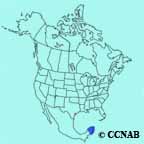
Distribution: The Yucatan Vireo is a resident bird of Belize and surrounding countries. It is only seen on the Caribbean side of the continent. It is common on some of the Caribbean islands and does not seem threatened. It was reported seen once in Texas and is recognized as a vagrant to North America.
Reference to Other Bird Site:
ABA - American Birding Association This site represents an organization that maintains official records of all birds species that have been proven to have been seen inside the perimeters of the North American Continent and the surrounding bodies of water. Regular revised versions are posted to keep the bird list current at all times. This is the list used by all serious birders over their lifetime. You may be aware of the movie called the "Big Year". It was with this list that all the competing birders used in an attempt to set a new record as to how many bird species that could be seen by an individual birder in one calendar year.
